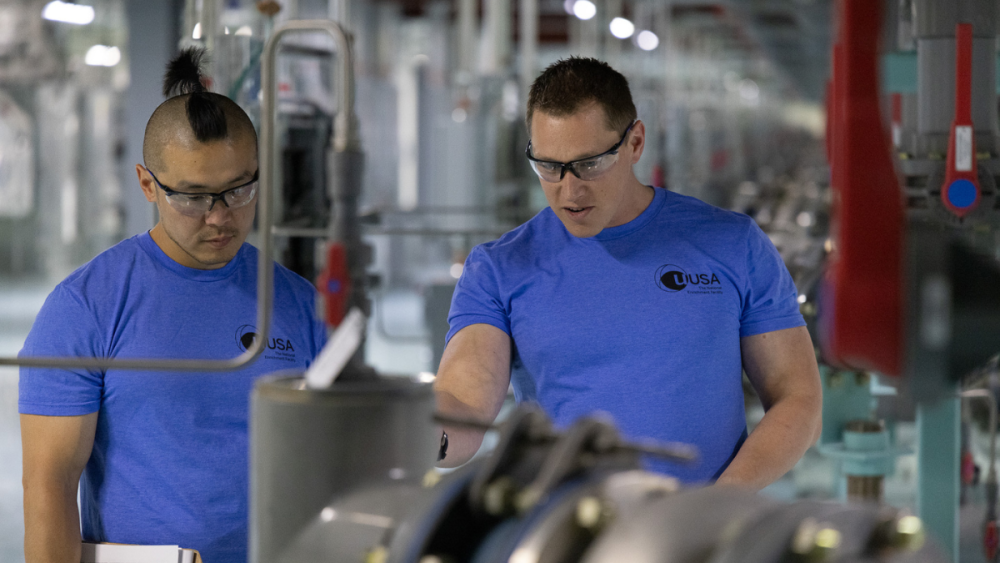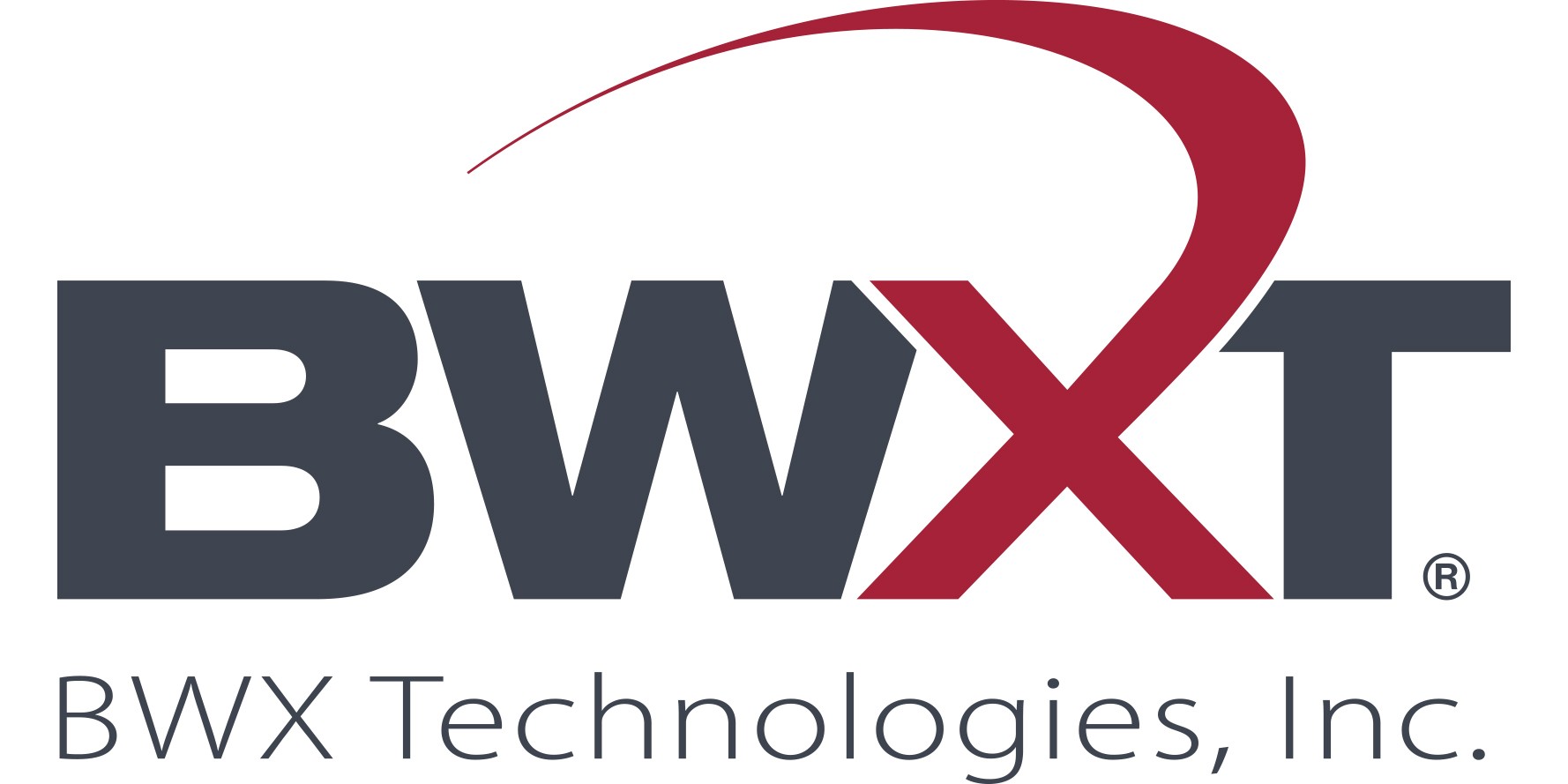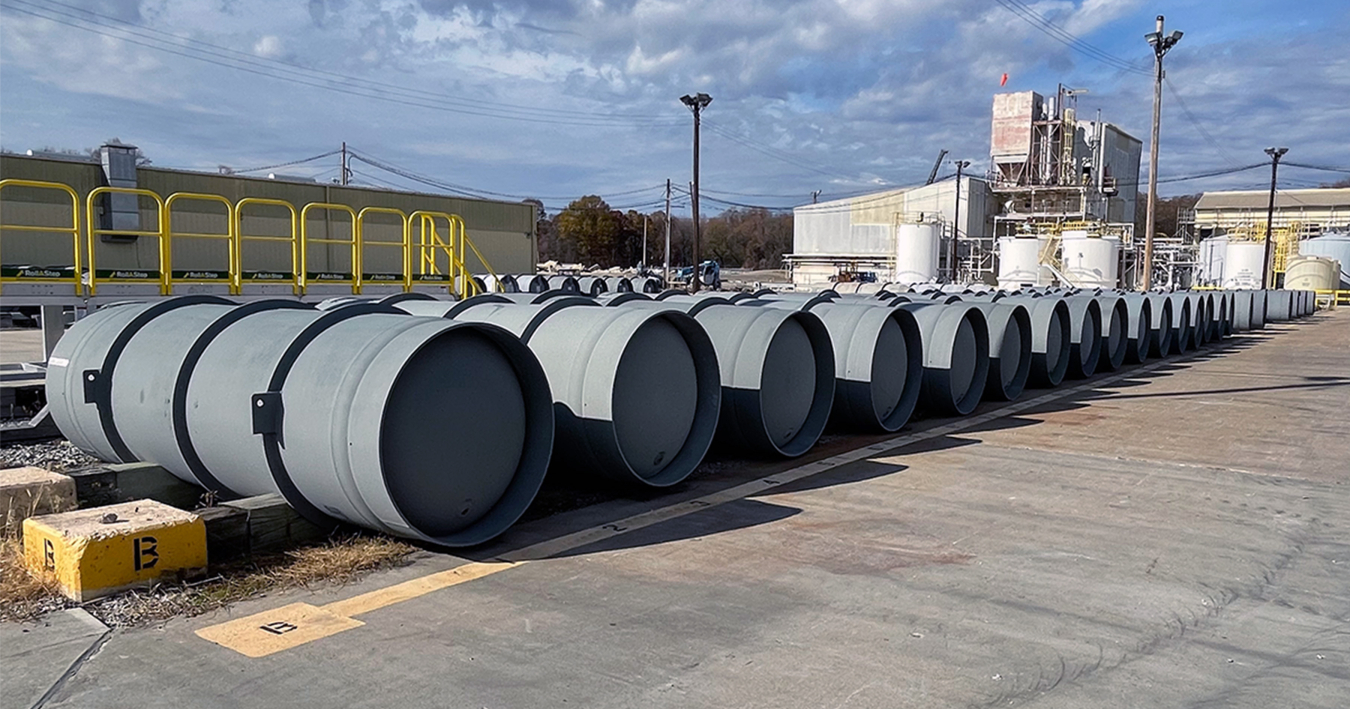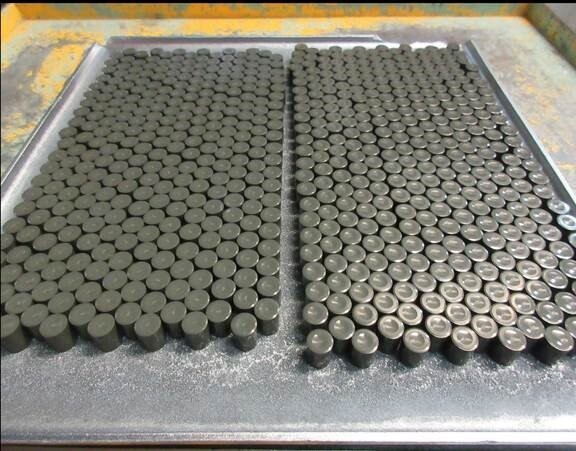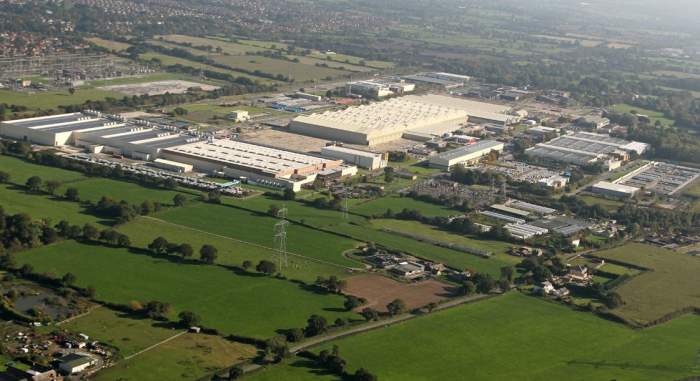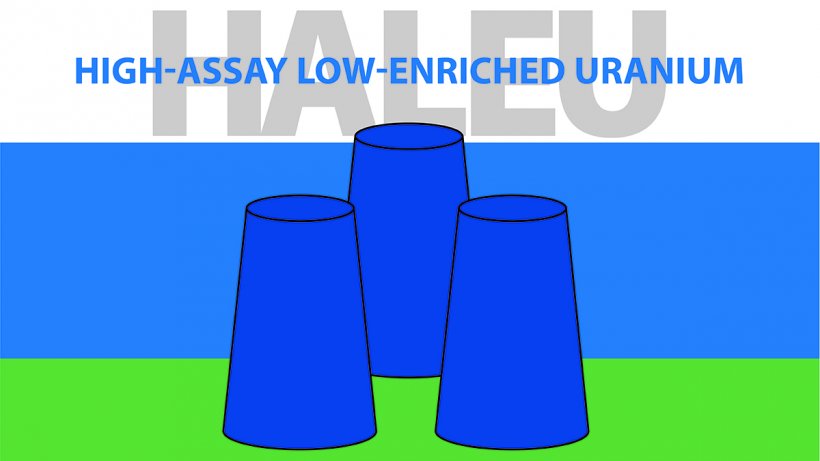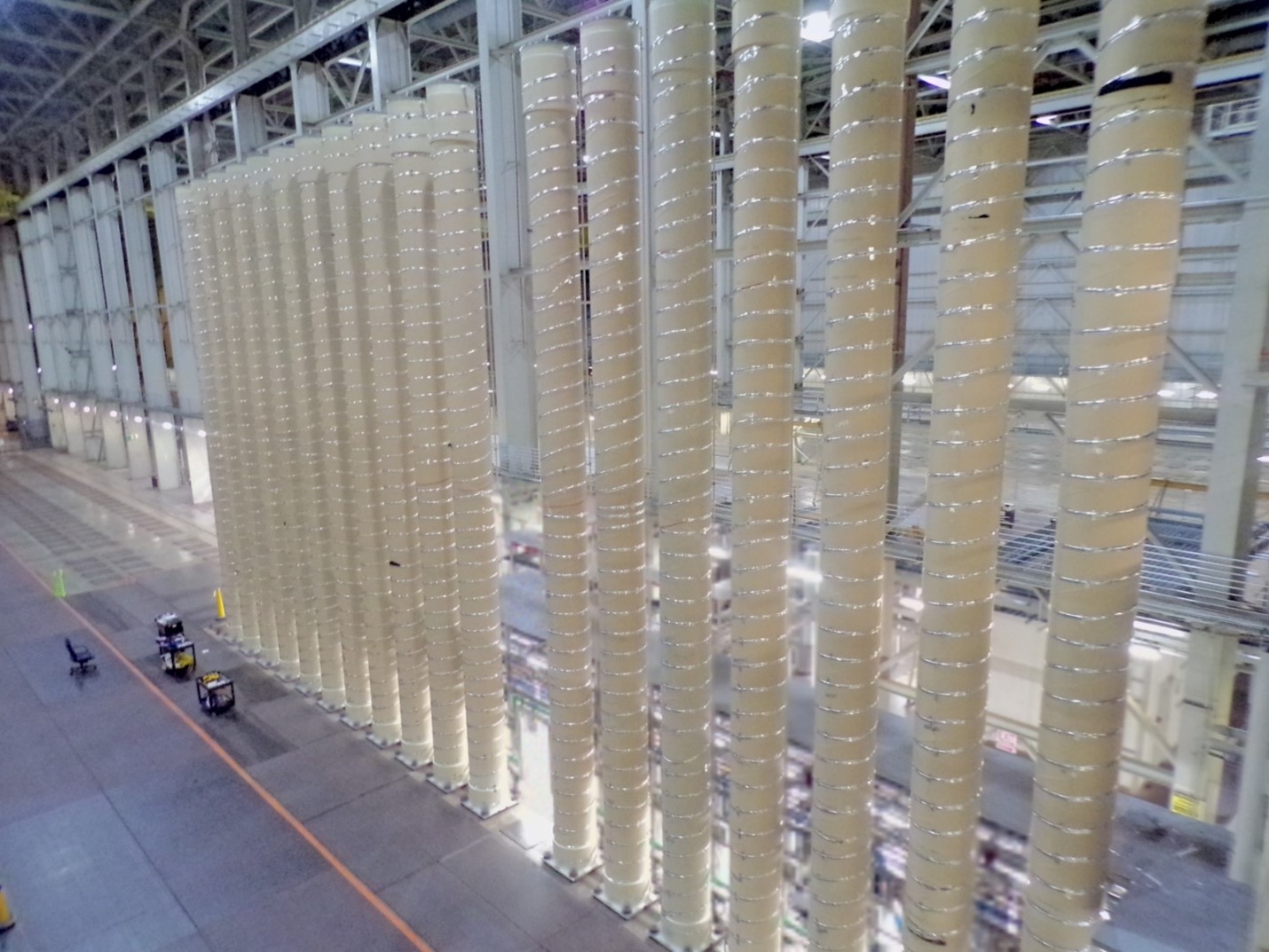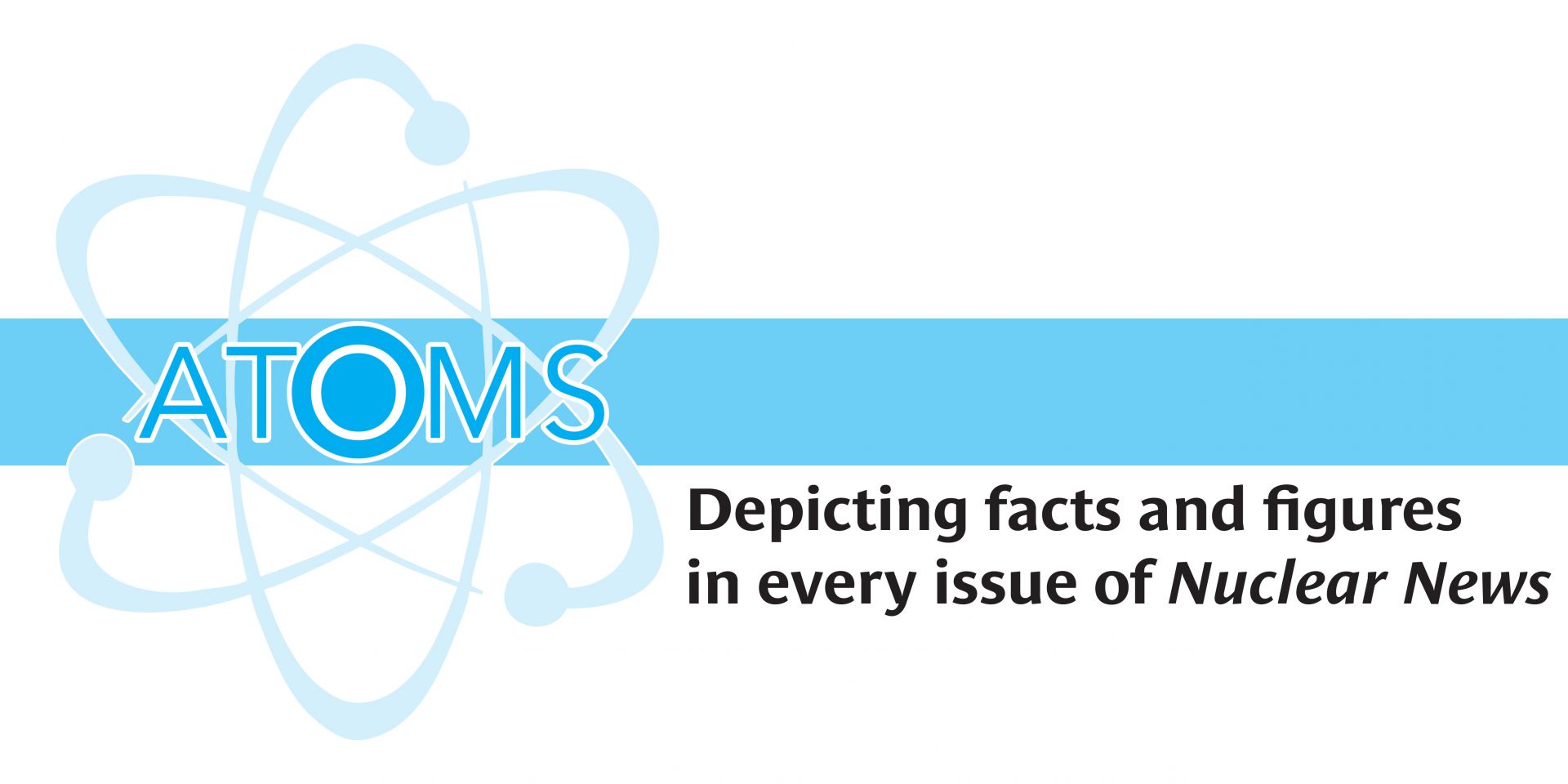A view of the HALEU cascade at the American Centrifuge Plant in Piketon, Ohio. (Photo: Centrus Energy)
Centrus Energy has secured a contract extension from the Department of Energy to continue—for one year—its ongoing high-assay low-enriched uranium (HALEU) production at the American Centrifuge Plant in Piketon, Ohio, at an annual rate of 900 kilograms of HALEU UF6. That's the same amount of HALEU—900 kg—that the company today announced it has delivered to the DOE, completing Phase II of its contract. According to Centrus, the contract extension, which allows the company to begin Phase III, is valued at about $110 million through June 30, 2026.
Paragon vice president John Portillo (left) and Terra Innovatum partner and chief business development officer Giordano Morichi at the signing ceremony. (Photo: Paragon)
Paragon Energy Solutions has signed a memorandum of understanding with Terra Innovatum, a developer of micro-modular nuclear reactors, to support the design and integration of instrumentation and control systems for Terra’s Solo micro-modular reactor. Paragon is a provider of safety-related I&C systems for the nuclear energy community.
Urenco staff at the facility in Eunice, N.M. (Photo: Urenco)
Urenco USA has initiated production of enriched uranium in its newest gas centrifuge enrichment cascade—the first in a planned expansion of its Eunice, N.M., facility announced in July 2023. When the expansion is complete, early in 2027, the site will have increased its capacity by about 15 percent, adding about 700,000 separative work units (SWU) per year, the company said May 19.
At NRC headquarters are (from left) UUSA’s Gerard Poortman, Wyatt Padgett, Lisa Hardison, and Paul Lorskulsint (seated), with the NRC’s James Downs (seated), Shana Helton, Kimyata Morgan-Butler, John Lubinski, and Johnathan Rowley. (Photo: Urenco USA)
Just one day after Urenco USA (UUSA) was picked by the Department of Energy as one of six contractors eligible to compete for future low-enriched uranium task orders, the Nuclear Regulatory Commission on December 11 formally approved the company’s license amendment request to boost uranium enrichment levels at its Eunice, N.M., enrichment facility to 10 percent fissile uranium-235—up from its current limit of 5.5 percent.
Uranium hexafluoride gas containers. (Photo: DOE)
The Department of Energy announced yesterday the six companies that it has selected to supply low-enriched uranium (LEU) from new domestic enrichment sources under future contracts for up to 10 years. The contract recipients are: Centrus Energy’s American Centrifuge Operating, General Matter, Global Laser Enrichment (GLE), Laser Isotope Separation Technologies (LIS Technologies), Orano Federal Services, and Urenco USA’s Louisiana Energy Services.
Westinghouse ADOPT fuel pellets. (Photo: Westinghouse)
Westinghouse Electric Company announced Aug. 8 that it has completed the first pressing of ADOPT nuclear fuel pellets at the company’s Springfields Fuel Manufacturing Facility in the United Kingdom. The pellets, which can contain up to 8 percent uranium-235 by weight, are destined for irradiation testing in Southern Nuclear’s Vogtle-2 pressurized water reactor.
Urenco’s Capenhurst enrichment site in the U.K. (Photo: Urenco)
A plan to build up a high-assay low-enriched uranium fuel cycle in the United Kingdom to support the deployment of advanced reactors is still in place after the Labour party was voted to power on July 4, bringing 14 years of conservative government to an end. A competitive solicitation for grant funding to build a commercial-scale HALEU deconversion facility opened days before the election, and the support of the new government was confirmed by a set of updates on July 19. But what does the U.K. HALEU program entail, and how does it differ from the U.S. HALEU Availability Program?
Upper-level view of Centrus’s HALEU cascade. (Photo: Centrus Energy)
The Nuclear Regulatory Commission is requesting comments on the regulatory basis for a proposed rule for light water reactor fuel designs featuring high-assay low-enriched uranium (HALEU), including accident tolerant fuel (ATF) designs, and on draft guidance for the environmental evaluation of ATFs containing uranium enriched up to 8 percent U-235. Some of the HALEU feedstock for those LWR fuels and for advanced reactor fuels could be produced within the first Category II fuel facility licensed by the NRC—Centrus Energy’s American Centrifuge Plant in Piketon, Ohio. On September 21, the NRC approved the start of enrichment operations in the plant’s modest 16-machine HALEU demonstration cascade.





